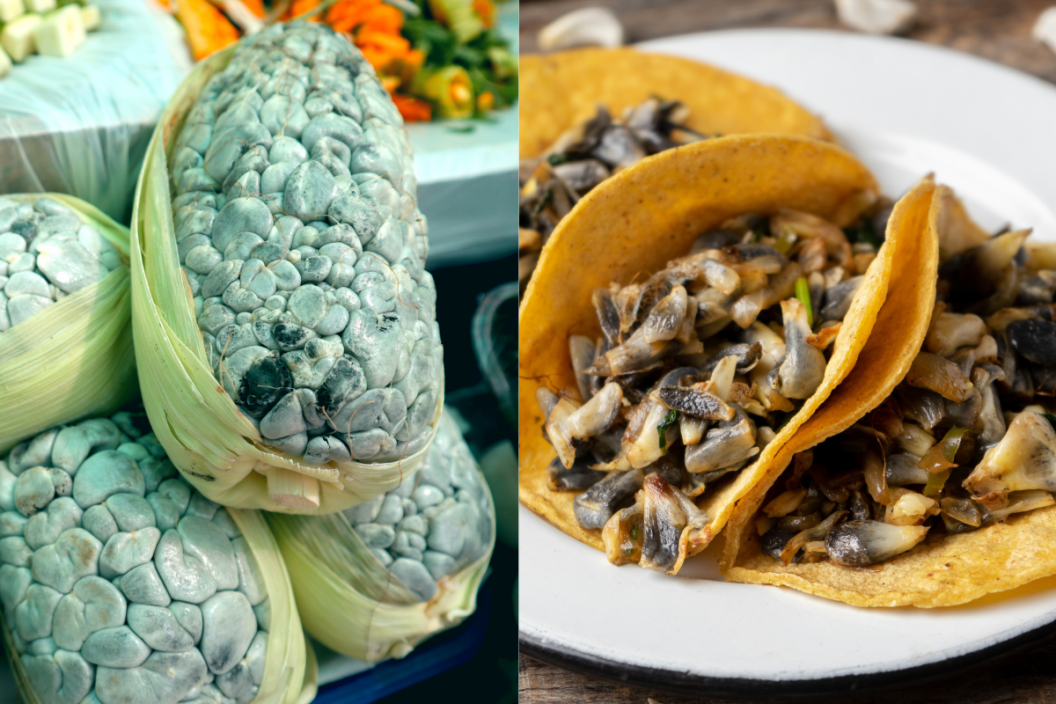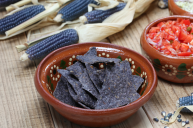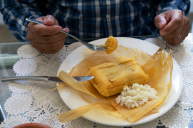Have you ever heard the saying "one man's trash is another man's treasure?" That's exactly what came to mind when I first heard about the mysterious corn fungus called huitlacoche taking over gardens and farms with its quick-spreading spores. Although farmers and gardeners consider fungus to be an unwelcome guest, others have made this strange disease into a delicacy.
What is Huitlacoche?
Huitlacoche, also called devil's corn, corn smut, Mexican truffle, corn truffle, or corn mushroom, is a plant disease caused by the fungus Ustilago maydis. In the Aztec language of Nahuatl, the affliction is called Cuitlacoche, which most believe can be translated to "sleeping excrescence/growth." This is because the fungus keeps the corn kernels from growing, causing them to "sleep."
The mysterious fungus can be found in warmer growing zones, mostly across Mexico and the southern United States. The disease begins on the tassels, stalks and leaves of the plant, but eventually destroys the ears of corn plants, turning each corn kernel into a blue-grey bulge.
In the United States, huitlacoche is considered a blight on your corn crop, to be avoided at all costs and even called "devil's corn" by some. However, this edible fungus is a delicacy in Mexican cuisine, where it's enjoyed in quesadillas, tacos, tamales, and soups. It also has a number of heart benefits, providing the essential amino acid lysine, along with lots of protein and fiber.
The Ambrosia of the Aztec Gods
I first learned of this polarizing fungus when talking to a Mexican-American chef. Having grown up in Mexico, he loves the earthy, sweet, mushroom-like flavor of the Mexican delicacy. As a chef in the United States, he told me of his search for the strange "truffle," which mostly involved calling farmers and asking if they had any corn fungus growing on their crops at the moment.
The corn growers all emphatically assured him that their crops were perfectly healthy, with no fungus in sight, since no farmer in his right mind would admit to having diseased corn. Sadly for the chef, this has made it nearly impossible to incorporate fresh huitlacoche into his dishes.
In Mexico, farmers search for Cuitlacoche in their Mexican corn during the rainy season, from about May to October every year. The fungus flourishes in the wet, rainy conditions, and farmers collect it in big buckets to sell at Mexican markets, to be stuffed in tortillas and added to soups.
Diana Kennedy, renowned as the "Julia Child of Mexico," even mentions this beloved food in her book The Cuisines of Mexico. "It may have been ambrosia of the Aztec gods with an inky, mushroomy flavor that is almost impossible to describe."
This mushroom-like food first became known in the U.S. in the late 80's, when it was served by chef Josefina Howard in a huitlacoche feast at the James Beard House in New York City. Although it's still considered a troublesome pest to most, more and more farmers and chefs are learning of the deliciousness of this Mexican fungicide.
Some scientists are even looking for ways to grow the fungus deliberately, intentionally infecting varieties of sweet corn and Mexican corn. The goal is to create a liquid inoculum that farmers can use to infect their corn.
How to Eat Huitlacoche
Although no one has yet found a way to infect corn cobs with the disease intentionally, some farmers in the U.S. have caught on to the trend of using the fungus for good. It can be found in some farmer's markets and Mexican grocery stores, and is easy to use.
Huitlacoche is delicious in many dishes, from huitlacoche quesadillas to chicken and huitlacoche soup. It can also be prepared simply, sautéed with olive oil, onions, epazote (an herb like cilantro), and serrano chiles. I don't know about you, but anything considered "food of the gods" is worth a try in my book!




